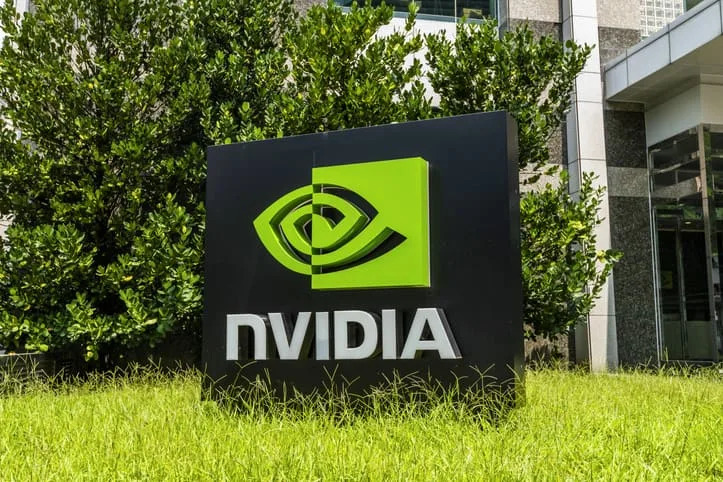10 stocks making best use of investors’ money. Here’s who beats Nvidia.

There are many ways to sift financial data as part of a stock-selection process. One method is to look at companies’ returns on invested capital as a measure of how efficiently a management team has deployed investors’ money. But complicated accounting rules can distort the numbers.
Below are the results of a screen of the S&P 500 SPX using returns on invested capital as calculated by New Constructs, an investment data and research firm founded by Chief Executive David Trainer in 2002.
A company’s return on invested capital (ROIC) is its profit divided by the sum of the carrying value of its common stock, preferred stock, long-term debt and capitalized lease obligations.
The carrying value of a company’s stock may be much lower than its current market value. The company may have issued most of its shares many years ago at a price much lower than today’s price. If a company has issued a relatively large amount of shares recently, or at high prices, its ROIC will be lower. If a company has low debt, its ROIC is higher. If a company is being forced to increase borrowings, its ROIC will fall.
Making the best use of ROIC means taking into account all the ways the data can be distorted under standard accounting practices, which is where New Constructs comes in. The firm defines ROIC as net operating profit after tax (NOPAT) divided by adjusted ROIC. Here is the firm’s definition of NOPAT and here is a summary of 30 adjustments New Constructs makes to NOPAT as part of its investment analysis and ratings service.
A critical factor in distorting ROIC numbers is that write-downs of goodwill and other items years or even decades ago can distort ROIC calculations for the most recent periods. During an interview with MarketWatch in October, Trainer explained that if a company writes down the value of any of its assets, such as acquisitions it may have paid premium prices for, it books noncash losses at that time, and the result is that the invested capital “disappears.”
Invested capital should include “all the capital that has been invested” through a company’s life, Trainer said. Here is an explanation of all the adjustments New Constructs makes to add write-downs and other items back into invested capital . This is painstaking work that has involved the review of notes below financial statements in corporate filings going back as far as 1986, Trainer said.
The October interview and data provided for companies in the S&P Small Cap 600 SML led to this screen to identify smaller companies with the highest average adjusted five-year ROIC .
A ‘high ROIC’ example
If we were to screen the components of the S&P 500 for five years using only the numbers in the companies’ financial statements over the past five years, VeriSign Inc. VRSN would top the list, with an average ROIC of 224.9% according to data provided by FactSet. For its most recently reported full fiscal year, VeriSign’s unadjusted ROIC was 372.7%.
Breaking that down, the numerator was VeriSign’s net income of $817.6 million for 2023, divided by the year’s average invested capital of $219.35 million. The average invested capital included negative common equity of $1.56 billion. And that negative equity number reflected write-downs decades earlier, including “a noncash charge of $9.9 billion in the second quarter of 2001 related to write downs of goodwill due to changes in market conditions for acquisitions made with [VeriSign’s] common stock” that the company reported in its annual 10-K report for that year .
So VeriSign’s still-low invested capital supports its high current ROIC. On an adjusted basis, the company’s ROIC was 4.4% for 2023, with a five-year average of 3.9%, according to the data provided by New Constructs.
This is not to bash VeriSign — the company follows generally accepted accounting principles (GAAP) in its financial statements. There are other measures of operating performance that can attract investors, including Berkshire Hathaway and its CEO Warren Buffett, who have accumulated a large stake in VeriSign’s shares. Berkshire’s attraction to the stock might be VeriSign’s recent profit margins, which rank near the highest among companies in the S&P 500 .
Screening the S&P 500 for highest adjusted ROIC
New Constructs provided ROIC data for the past five reported fiscal years for the S&P 500. So in most cases, the data runs through 2023. For about 20% of the S&P 500, fiscal years don’t match the calendar, so some of the ROIC figures are for more recent periods.
Companies with negative average invested capital for any of the past five fiscal years were excluded from the screen.
Here are the 10 companies in the S&P 500 with the highest five-year average ROIC, as calculated by New Constructs:
|
Company |
Ticker |
Five-year average ROIC |
|
Texas Pacific Land Corp. |
TPL |
105.96% |
|
Arista Networks Inc. |
ANET |
94.28% |
|
NVR Inc. |
NVR |
77.78% |
|
Apple Inc. |
AAPL |
77.52% |
|
Mastercard Inc |
MA |
68.88% |
|
Nvidia Corp. |
NVDA |
63.88% |
|
Booking Holdings Inc. |
BKNG |
63.72% |
|
Vertex Pharmaceuticals Inc. |
VRTX |
62.86% |
|
Moderna Inc. |
MRNA |
61.86% |
|
Enphase Energy Inc |
ENPH |
60.70% |
Click on the tickers for more about each company.
Read: Tomi Kilgore’s guide to the wealth of information available for free on the MarketWatch quote page
Don’t miss: This fund has a 20-year record of success and 7.5% income yield — using options

